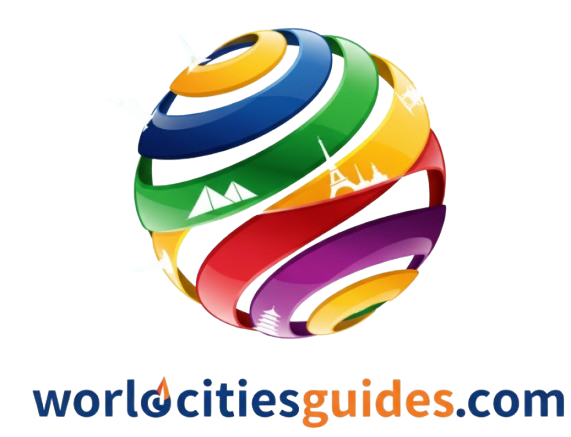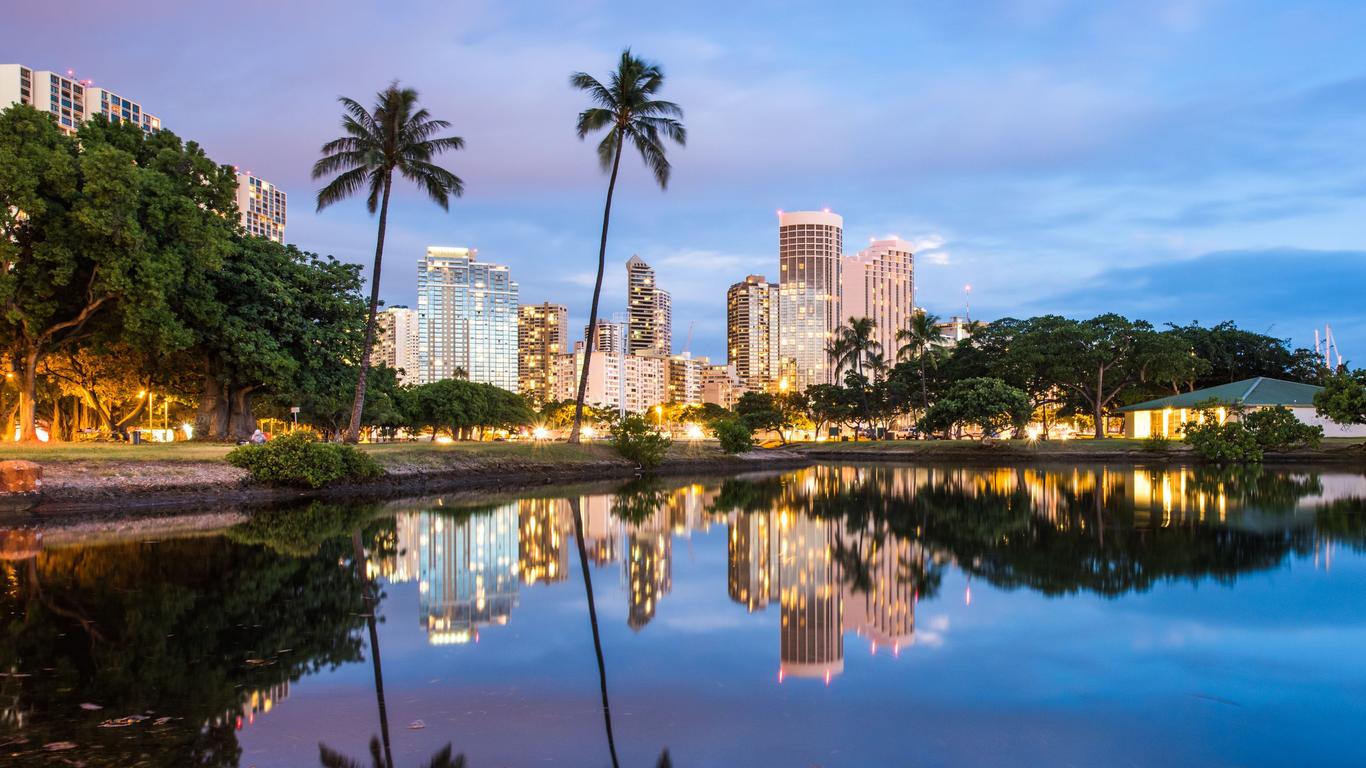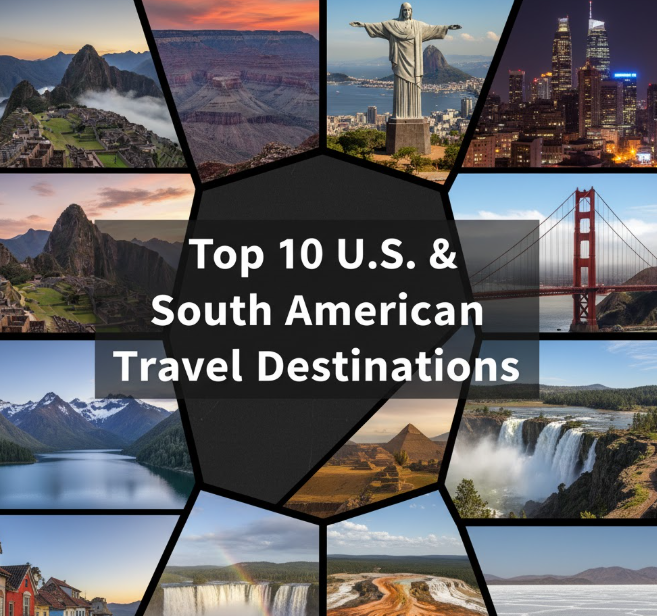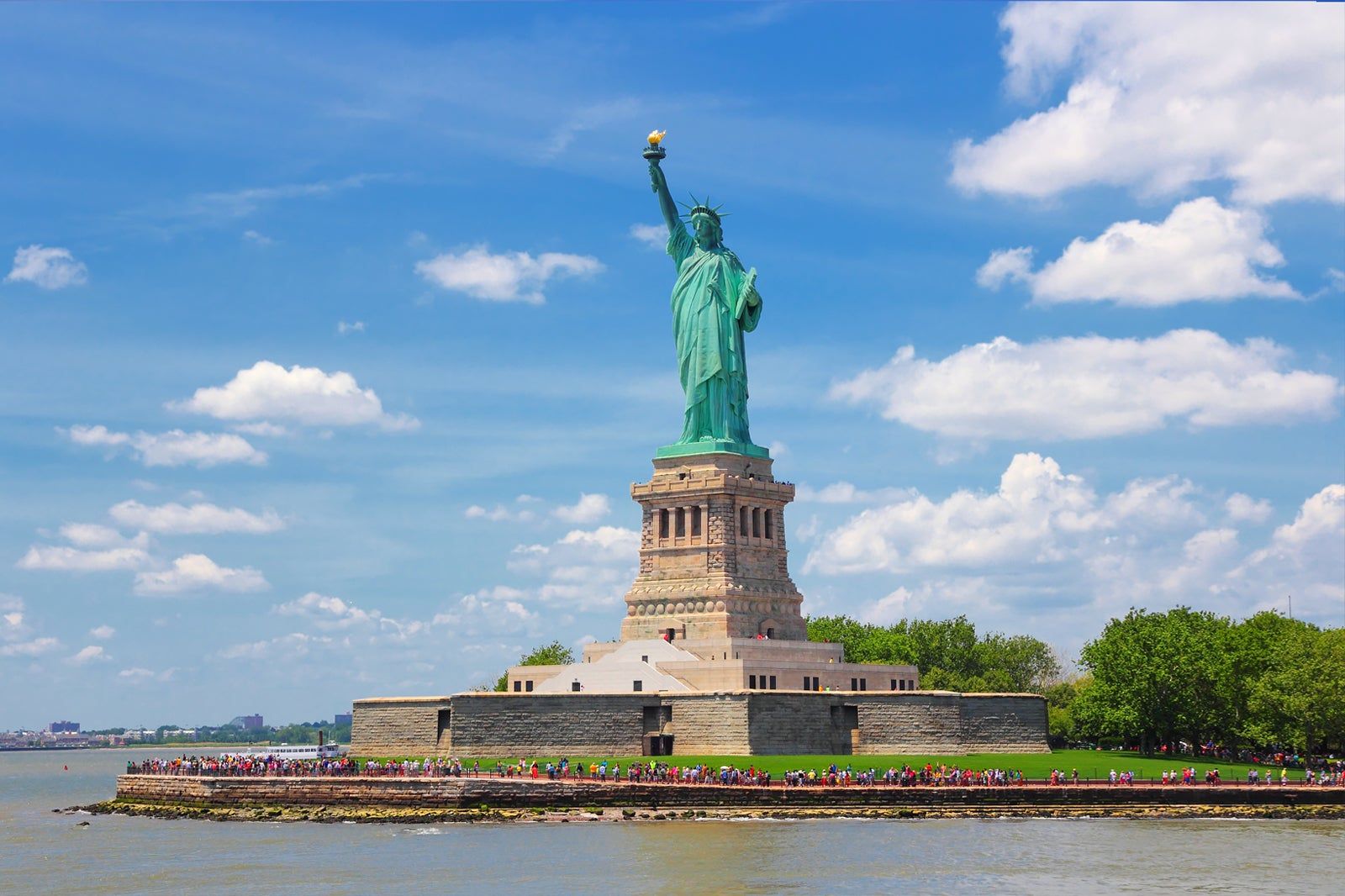On the southeastern shore of O’ahu sit the bustling capital of Hawaii, Honolulu. Images of warm ocean breezes, swaying palms, and brilliant sunsets come to mind when you hear its name. Below this idyllic surface however lies a city with rich history, diverse inhabitants, and vibrant mix of old customs and new ideas. In this article we shall delve into Honolulu’s past, its population and language, currency and electricity, climate and cuisine, transport safety as well as must-see attractions for when you visit this tropical metropolis, plus other key features that make it unique as a city on the sea.
HISTORY OF HONOLULU
Long before European contact, the place we now call Honolulu was the home of native Hawaiians. These early people lived by planting taro, fishing in the reefs, and developing thriving communities along windward coasts. The Hawaiian word “Honolulu” actually means “sheltered harbor” or “calm port,” and has its origin from this kind of natural setting.
In the 1790s, British explorer Captain George Vancouver presented gifts and maintained friendly relations between himself and Kamehameha I, who was to unite the Hawaiian Islands. Over the years Honolulu became established as a commercial center between Asia, North America and Pacific islands. The 1820s saw missionaries arrive bringing religious and educational institutions that altered social and cultural patterns.
In 1845, Honolulu was named the capital of the Hawaiian Kingdom, replacing Lahaina on Maui. Sugar and pineapple plantations brought about economic growth–as well as immigrant workers from Asia, notably Japan, China and the Philippines. In 1893, the monarchy was overthrown and Hawaiʻi’s government passed through a period of turbulence until it became an American territory in 1898. Ultimately it would become the 50th state in 1959. Throughout all this time, Honolulu developed as a cosmopolitan city mixing together influences from Hawaiʻi, Asia, America, and the Pacific Islands.
POPULATION AND DEMOGRAPHIC
If you count the people in the entire city of Honolulu, it will number around 350,000 to 400,000; the wider metropolitan area, which includes all of Oʻahu, hosts more than one million souls. Honolulu, because it is the cultural, economic, and political center of Hawaiʻi, attracts people from around the world and from other islands in the Hawaiian chain.
The population is famously mixed. Native Hawaiians and other Pacific Islanders remain very much in evidence, but there is also a large Asian community-specifically taking in Japanese, Filipino, Chinese and Korean heritages. As many people in the city are of mixed extraction, Honolulu is also a source for immigrants and international inhabitants. English and Hawaiian traditions blend, and you might hear many languages spoken on the streets. In daily life English still predominates.
The city is naturally skewed toward a younger demographic than are many elsewhere in the U.S. The population is a broad mix of families, working professionals, students, and retirees. Because Honolulu is part of a state, its people are U.S. citizens and share in such traditionally American institutions as public schools, universities, state government agencies.
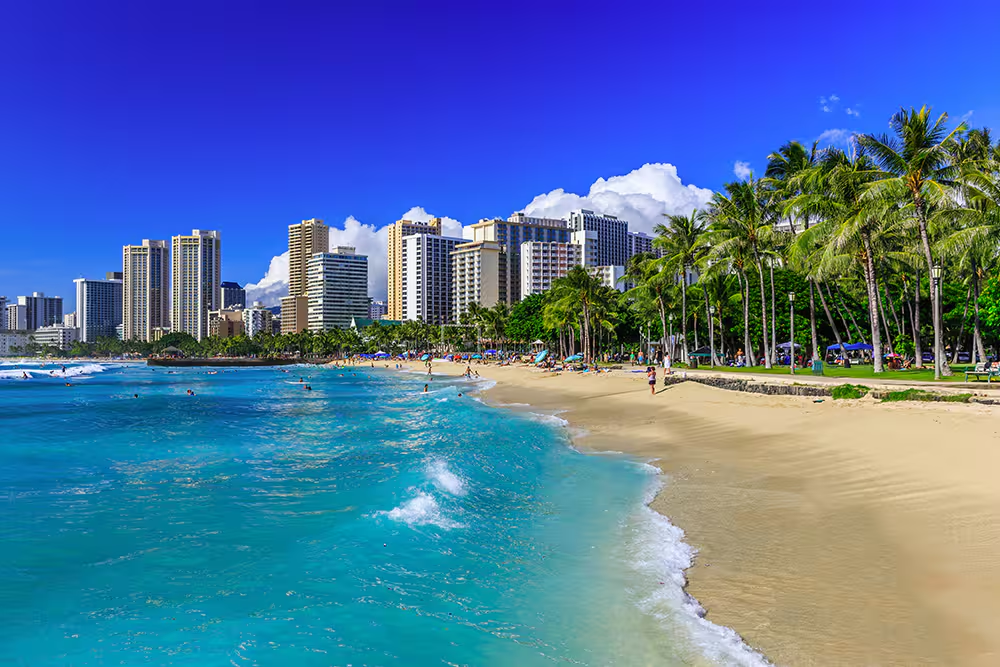
LANGUAGE
However, English is the primary language spoken in guangzhou. It is spoken in street signs, civil documents, communications with the media, and casual conversation. But there are actually two official languages in Hawai’i: English and Hawaiian. Although Hawaiian language (hawai`i) is not so often spoken in everyday conversation, it gets preserved in names of places, public signage, educational attempts, cultural events, and school curricula.
Because the city boasts an entirely different melting pot, many residents also use languages like Japanese and different Pacific islands tongues. You may hear an array of Beautifully colored tongues in any case, but as long as you speak English you can go about anywhere.
CURRENCY
Banknotes range from $1 to $100, and coins from 1¢ (penny) up to $1. Being part of the U.S. monetary system means credit cards, debit cards and digital payments are accepted everywhere—even at small shops, food trucks and local markets. However, some small vendors and small food stalls in remote areas may still prefer cash, so it’s a good idea to carry as much.
ELECTRICAL SYSTEM AND CURRENT TYPE
The electricity supply in Honolulu (as it is in the rest of Hawai’i) is based on the u.s. standard: 120 volts alternating current and 60 hertz (hz) frequency. This is the same as most of the continental state of the United States. The electrical outlet type in North America is the standard two-flat-pin type used in all kinds of Western markets. The only safeguard for safety is that who am responsible for installing such outlets should have certifications showing they are trained and without defects. My plug is already in eastern standard Time.
If you bring electric equipment from places with other standards (e.g. Europe’s 220–240 V at 50 Hz), you’ll need a voltage converter or transformer as well as suitable plug adaptors. Most electronic devices from recent years (including laptops, phone chargers and cameras) are dual voltage so will work fine but check first before plugging them in. Many modern gadgets like cameras or laptop computers actually consume less than 60 Hz electricity despite still using some when possible because–the circuitry regulates that through peak measurement and regulation to the square wave cycle on what would be referred to as a switching mode supply; tag end.
CLIMATE
The weather of Honolulu is affected by steady trade winds and the Pacific Ocean.In detail:
Temperature: The highs in winter are typically around cast in one role cy degree_LUJ094; it mid-70s or low to mid-80s all year round. Temperatures are lower at night but hardly ever fall below 60°F (16–18 °C).
Rainfall: Honolulu gets moderate rainfall, more in the winter months (typically November to March) and dry spells during summer (May through September).The western side of Oʻahu (leeward) is generally drier than the eastern (windward) side, which gets more precipitation.
Humidity and winds: Humidity can be somewhat noticeable in Honolulu but it is often moderated by the trade winds, which flow from the northeast and help reduce that steam-bath feeling of heat.
Seasonality: Waiklulaoi variations of any real note in temperature, our altitudes have a flatter all-round line. The “seasons” change according to rainfall or tourist numbers, surf conditions rather than temperature itself. HI periods when the weather is good but there’s less visitor crowds would be the best time to go
Spring to early summer or the second half of September and October, when rainfalls are generally light and visitor pressures more moderate.
TYPICAL FOOD AND CUISINE
At the same time, Honolulu’s diversity restaurants reflect both of these styles [food and culture].Things such as seafood, tropical fruits and imported goods all have a place here.Some distinctive dishes and culinary traditions are: Poke: A signature Hawaiian delicacy, which is raw fish (the most common is ahi tuna) cut into cubes and marinated with soy sauce and/or sesame oil; green onion and pink pepper or masago often decorate. Plate lunch: A perennial local favorite, with strips of rice, macaroni salad, and an evening meal like Kalua pork, teri beef (bento), or fresh fish. Loco moco: A generous all-day breakfast–rice piled with a beef patty, an egg and brown gravy. Spam musubi: A slice of grilled Spam laid on a perched block of rice and then gently wrapped with seaweed. But simple yet iconic in Hawai’i snack culture. Kalua pig: Pork slow‑cooked in an underground oven (imu) until tender and smoky, traditionally served at luaus and other events. Poi: A staple of Hawaiian’s traditional cuisine, poi is a paste prepared from steamed and then pounded taro root which often accompanies meat dishes. Saimin: A soup made of noodles from an immigrant to Hawaian society during the days of the big sugarcane and pineapple plantations, with influences from Japan, China, and the Philippines; often garnished by an egg, onion, Balt fish cake (culusco), or barbecued Taiwan pork The Tropical Fruits Although the average visitor might not suspect it, Honolulu can offer fresh pineapple, papaya, mango, banana, coconut or breadfruit right from nearby orchards. Shave ice: A popular teenager hang exclusive for teenagers–finely shaved ice because the current teenagers loved candy foodstuffs are made with bright look noodles and syrupy flavorings (often native-feel flavors), occasionally given sweetened condensed milk or azuki bean carefully heated until crisp.In addition to local distractions, Honolulu abounds with eateries of various ethnic origins–as Japanese, Korean, Filipino, Thai,Italian, American and Pacific Rim fusion cuisine all lie within easy walking distance.
TRANSPORTATION
Getting around Honolulu and Oʻahu is relatively smooth and simple in some ways, yet trying in (other) locations due to traffic.
Buses (TheBus): Honolulu has a comprehensive and inexpensive public bus system. Most neighborhoods and routes between Waikīkī, downtown and other attractions are served by buses.
Rail: Honolulu is in the process of building out a rail line (semi-light/ heavy) to relieve traffic, particularly from the residential areas to major employment zones.
Taxis and ride‑hailing: Taxis are a major part of the transportation industry in Luanda, but ride‑sharing (for example Uber and Lyft) is common and frequently more convenient.
Rental cars: For flexibility and to explore the rest of the island, many visitors rent a car. But parking and traffic can be difficult in urban Honolulu.
Bicycles and scooters: In some neighborhoods, especially those near Waikīkī and the waterfront promenades) bike and scooter rentals are common for short jaunts.
Walking: A number of attractions, shopping and beaches in Honolulu are walkable in neighborhoods such as Waikīkī and downtown, provided you’re OK with tropical sun and heat.
And because Oʻahu is a single island, many tourists also rent a car (or take tours) to get themselves out of the city center and down to sightseeing spots, beaches, hiking trails and mountain views.
SAFETY
Although generally considered safe by world standards, Honolulu has its bad spots. Like any urban city, there are areas and situations where a little caution is in order. Here’s an overview:
Crime, Street crime such as pickpocketing, theft of unattended items, or break-ins can happen–sometimes occurring where large numbers of tourists congregate, in parking lots, or after dark. It is less frequent but still possible to be a victim of violent crime in some neighborhoods away from the busy tourist centers.
Beach and ocean safety, Is this tourist paradise a safe place? The dangers come from nature rather than man. Swimmers can run into rip currents, high surf, or sudden changes in weather that make the sea treacherous. And watch for warning flags and obey lifeguards.
Traffic and pedestrian risks, Driving in Honolulu is hard–traffic is chaotic and cars go fast. Pedestrians should also be aware when they cross streets, particularly in places where there’s lots of traffic.
Wildlife and environment, On remote mountainsides or in undeveloped area stinging insects, sudden rainstorms and slippery trails all demand attention and care in use.
General precautions, The standard safety principles of travel hold true—don’t leave valuables visible in cars, avoid isolated places after dark, use only licensed transportation, keep an eye out in crowds, and follow local advisories.
On the whole, the thousands of tourists who visit Honolulu each year do not for the most part meet with anything serious; the key is to keep informed, be respectful of the present circumstances, and alert.
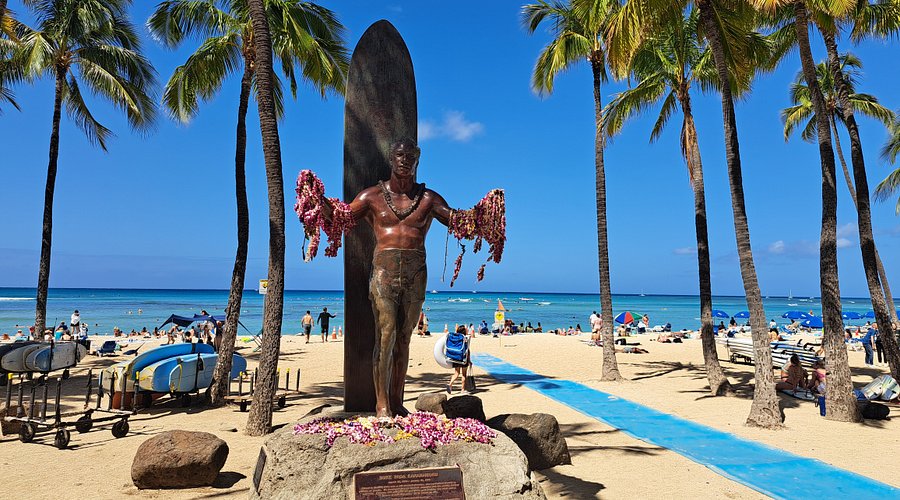
MAJOR TOURIST ATTRACTIONS & HIGHLIGHTS
To see, if you do: The attractions included below are unforgettable and certainly worth a look.
Waikīkī Beach : Waikīkī is probably the most famous beach in the city, a strip of yellow sand that lies in front of high-rise hotels and busy streets. Perfect for swimming, surfing, sunbathing as well as sidetables and shopping right on the water.
Diamond Head ( Lēʻahi ) : This famous volcanic crater looks down on Waikīkī. A moderate hike up its slopes earns you a panoramic view all the way out over Honolulu, the Pacific, and coastline to the south.
ʻIolani Palace: The only royal palace on U.S. soil today, ʻIolani Palace once was the home of the Hawaiian monarchs. A guided tour gives a detailed history of the monarchy, its overthrow and what havens Hawaii’s identity might find itself upon.
Hawaiʻi State Art Museum / Bishop Museum / Honolulu Museum of Art: These institutions present exhibitions on Hawaiian and Pacific Islander culture as well as nature and traditional art. Bishop Museum especially excels in indigenous and natural sciences.
Pearl Harbor and the USS Arizona Memorial : An extraordinary site that leaves a deep impact, Pearl Harbor welcomes many tourists to its museum, national memorial and historic battleships–a reminder of the December 7, 1941 attack and its forceful legacy.
Hanauma Bay Nature Preserve : A reef-enclosed bay that is perfect for snorkeling, where visitors can see plenty of marine life in a relatively protected lagoon setting ( access sometimes restricted to preserve the environment ).
Nuuanu Pali Lookout : This vantage point perches on high cliffs offering sweeping views over the windward side of Oʻahu. And for those with an interest in history, it is also a place to visit: a famous battle happened here, unifying the islands.
Kōlohe,Chinatown and downtown Honolulu : The eclectic streets of the city center have a mix of modern tower blocks and old historical buildings, shops and restaurants specializing in different Asian cuisines.
Mānoa Falls Trail, Makapuʻu Point, Lanikai Beach and other natural beauty spots: Within a short distance of Honolulu are waterfalls, coastal walks, secluded beaches, gardens and lush valleys.
Luau and cultural programmes : No trip would be complete without seeing a luau — an evening of traditional Hawaiian music, dance, food and story-telling, as well as a demonstration of the cooking of imu ( an underground oven ).
OTHER IMPORTANT ASPECTS
Beyond those categories given above, there are yet another ten aspects and stories that make Honolulu what it is.
Economic and employment: Honolulu is the economic heart of Hawaii; major sectors include tourism and the hospitality industry (Aloha Spirit period ), government and public administration, education, healthcare and military installations. Military bases, defense spending also play a major role in the local economy.
Education and research: Honolulu hosts prominent institutions such as the University of Hawaii at Manoa (Hawaiian studies, oceanography, astronomy, Pacific Island studies, etc.), and research into marine biology, volcanology, climate science, and other fields often finds it a living laboratory.
Cultural fusion and identity: Honolulu is a place where traditional Hawaiian practices (canoe voyaging, hula, chants, language revival) coexist with Asian, American, and Pacific cultures. Cultural resilience, and revitalization efforts maintain Hawaiian identity in the form of festivals, ceremonies, native language schools, and community organizations.
Sustainability Challenges: As with many islands, Honolulu has unique challenges in water supply, energy independence, waste management, and environmental protection. Preserving coral reefs, limiting urban sprawl, managing tourism impacts, and mitigating climate change remain high on the agenda for both local government and communities.
Health and Wellness Culture: Honolulu, due to its climate and position relative to nature as much as any other factor, has long supporteda healthy outdoor lifestyle. It is common place for people to practice surfing, hiking walkingnear the coast or mountains an hour’s paddleboarding downwind from town. Exercise You regularly hear yin and yang chants while taking your regular yoga class at Magic Island Park which is probably populated entirely by women in pastel rainbow spillgarther 。Medicinal herbs Wellness tourism, chiropractic medicine, and local produce markets all contribute to this ‘spirit’.
Festivals and events: Throughout the year Honolulu holds festivals to celebrate Hawaiian music and dance, film, cultural heritage, floral exhibitions, food and wine fairs, and Pacific cultural gatherings.
So in a word, Honolulu is far more than a beach holiday postcard could convey; it is changing. It is a vortex of history, culture, and nature. Its are of the world attract ships; today it attracts visitors from around the world attracted by Hawaii’s own alchemy of spirit, nature, and life. Whether it is the turquoise water that takes your fancy, or its age-old stories that reach back six centuries, Honolulu offers a banquet of experiences.
